What Are Pave Diamonds? All you need to know!
January 30th, 2024 / Hetal M
The word pavé means “pavement” in French. Pavé is an indicator of the ring’s setting, typically referring to how the diamonds are set. When looking at a ring with a pavé setting, you’ll notice several tiny diamonds closely set together, resulting in a line – or pavement – of continuous sparkle.Thinking about purchasing a pavé diamond? Before doing so, find answers:
Are Pavé Diamonds Real Diamonds?
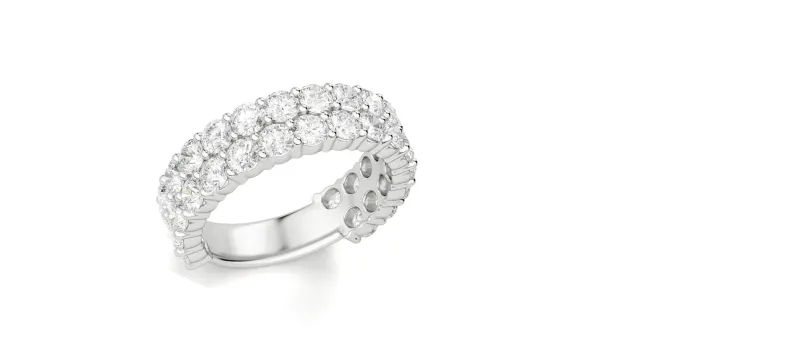
Pavé style diamonds are not diamonds at all. The term pavé doesn’t refer to either the diamond or the cut of the diamond. So, what is the pavé diamond meaning? Pavé is a word that refers to the ring’s setting. Each of the tiny diamonds in a pavé setting is attached with droplets of metal, sometimes called beads, or are anchored with tiny prongs. Pavé rings aren’t just paved with diamonds either. You can buy a pavé engagement ring that’s paved with any type of stone that you like.
Many couples like pavé settings because they add a subtle flash and brilliance to a wedding band or engagement ring, without also adding a steep price hike. A pavé setting also shows off an exquisite center stone beautifully, which makes them very popular as engagement rings.
Are Pavé Diamonds Expensive?
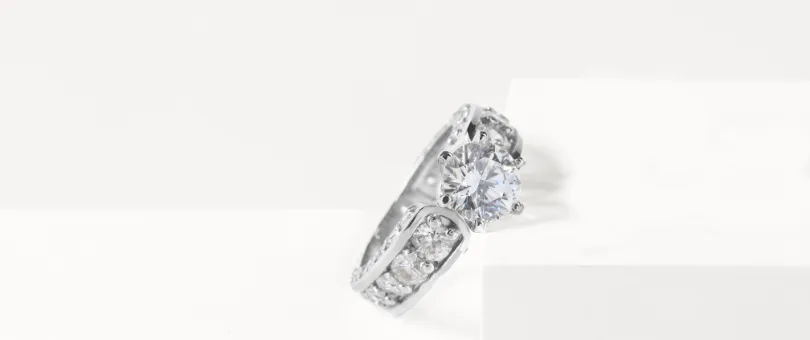
Since pavé refers to a setting and not a diamond, this question is a bit of a misnomer. However, a pavé set diamond ring is often much more affordable than other types of diamond rings simply because it’s paved with accent diamonds. Accent diamonds are different than other diamonds because they are much smaller in size—typically less than 0.1 carats—and their color and clarity aren’t considered as high-quality.
Pavé diamonds are usually not entirely colorless, although they might look like it with the naked eye. This is because even with some color, the diamonds are so small that the color is hard to spot. The clarity of pavé diamonds usually isn’t as good as a larger diamond either, as they typically contain more inclusions. Accent diamonds are frequently rated as slightly included.
When a diamond has a high clarity rating, it means it has fewer imperfections than a pavé set diamond with a lower clarity rating. Since quality is higher with high clarity diamonds, so is the price tag. And since pavé diamonds have a lower clarity score, they have a lower price tag. This makes pavé settings very popular for the budget-minded.
Do Pavé Diamonds Fall Out Easily?
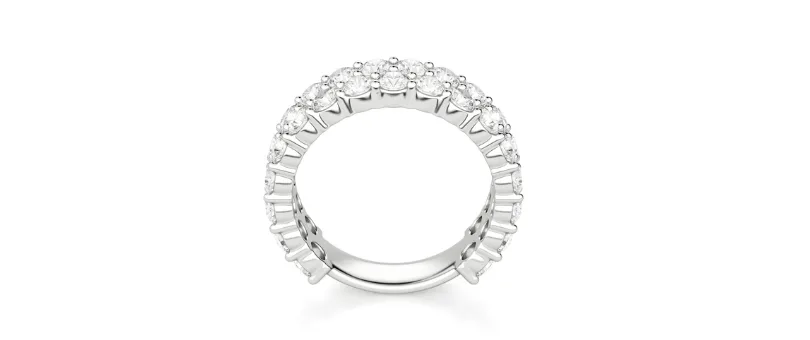 Pavé diamonds do not usually fall out easily, although it does happen. When you get a ring with a pavé ring setting, each stone is held and mounted to the ring using tiny beads or tiny prongs that minimize the look of the metal. Each diamond is held there individually, and does not have a metal rim around them the way channel or bevel settings do. This gives the illusion that the tiny stones are freestanding. This also increases the brilliance of the ring because light can reflect in every stone.
Pavé diamonds do not usually fall out easily, although it does happen. When you get a ring with a pavé ring setting, each stone is held and mounted to the ring using tiny beads or tiny prongs that minimize the look of the metal. Each diamond is held there individually, and does not have a metal rim around them the way channel or bevel settings do. This gives the illusion that the tiny stones are freestanding. This also increases the brilliance of the ring because light can reflect in every stone.
Can Pavé Diamonds Be Replaced?
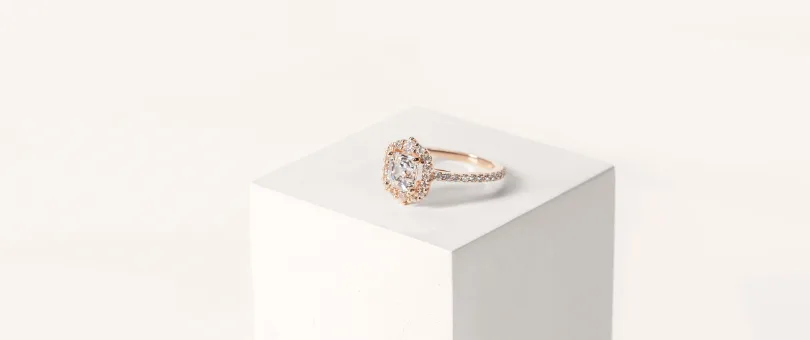
You can replace stones that fall out of a pavé ring setting, usually without too much trouble. It’s also not too expensive. However, when making a purchase, be sure to speak with your jeweler. Sometimes there are gem replacement policies that are offered on pavé style rings.
Pavé vs. Channel-Set Diamonds
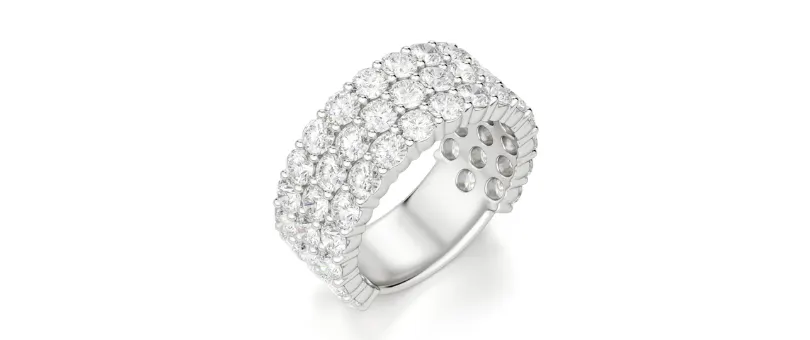
Though they can look similar, they are quite different. A pavé setting only uses tiny little prongs or beads to hold each stone in place on the ring. A channel ring setting, on the other hand, means the stones are set into the actual ring and rimmed with metal. The metal is what secures the tiny stones all together in a line, or “channel.” It’s important not to confuse metal channel rings with filigree rings. Now, you may be asking what is filigree? Filigree happens to be an intricate form of metalwork that is popular on rings.
Different Types of Pavé Settings?
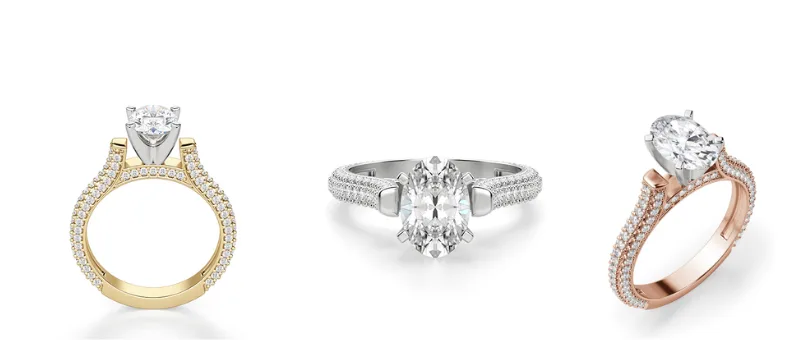
Pavé settings come in three different types. You can buy a ring with a micro pavé setting, a petite pavé setting, or a standard pavé ring setting. Micro pavé and petite pavé settings mean that the tiny beads or prongs that hold the diamonds in place are smaller than the standard pavé setting. They go in order, with the micro pavé being the smallest and the standard pavé being the largest.
Since standard pavé settings use prongs that are more prominent than micro or petite pavé settings, the resulting look is an appearance that’s similar to a tiny, cobblestoned street. However, if you want to do a tiered look, with your diamonds stacked in rows or a design that crisscrosses, you’ll want to go with either a micro pavé or petite pavé setting. Though you can use a standard pavé setting and opt for larger pavé stones, the look will not be subtle. But hey, if that’s your thing, go for it!
What Are the Benefits of a Pavé Setting?

Pavé settings are an excellent choice if you want to give your wedding band a subtle sparkle that’s pretty and eye-catching, without breaking your wallet. Due to the sparkles, it may not be one of the best men’s wedding bands, but it is beautiful for a bride.
A guide to ring setting styles includes various types of settings that affect the appearance and function of an engagement ring. Pavé settings can also make rings that have a large center stone stand out. If your center diamond isn’t large, you can still accentuate it using a halo around the center stone. Using a halo gives your pavé ring the illusion that your center stone is larger than it actually is. Rings with a pavé setting can also allow you to create a design with diamond tiers that look beautiful but don’t make your ring seem bulky.
If you don’t like the traditional pavé with the stones on the sides of your ring, you can look for one that has pavé diamond accents instead. Even with a pavé setting, you can create a real statement look. You don’t have to use small diamonds. You can do something different and use larger diamonds for a dazzling effect with plenty of brilliance and fire.
Best Cuts for Pavé Rings
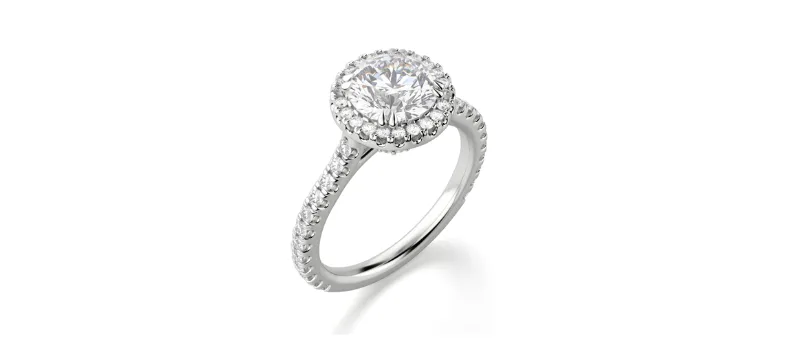
Traditionally, most pavé rings use only one diamond shape. That shape is a round, brilliant diamond. A round, brilliant diamond cut means that no matter if they are small diamonds or big diamonds, the brilliance is maximized to its fullest potential. The best cuts for pavé rings are typically round diamonds, as they are traditionally the finest choice for creating a pavé setting. Round diamonds are known for their brilliance and are the most common shape used in pavé settings. Other cuts that can be used in pavé settings include oval, princess, and emerald cuts, but round diamonds are the most popular due to their ability to reflect light and create a dazzling effect.
Perfect Band for the Pavé Setting

This will come down to your tastes and the ring size you’re looking for. Wider bands have more room for additional rows of pavé diamonds, allowing you to stack them. Another option is to use a split shank, which allows you to get the look of stacking, without actually stacking anything. If you prefer a daintier, more subtle look, you might decide to stick with a slim, micro pavé band with a center diamond.
Should You Mix Your Gemstones?
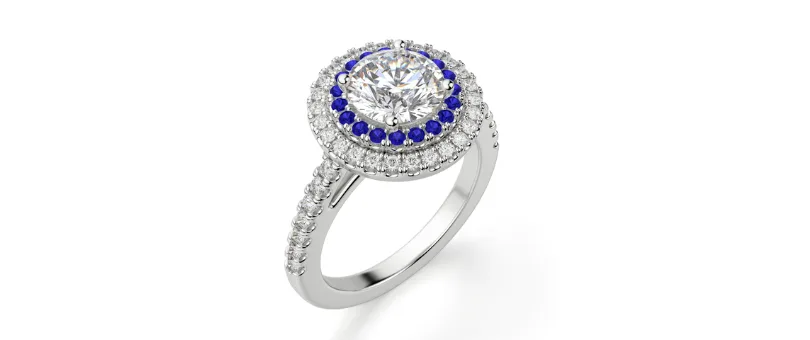
Remember that a French pavé setting doesn’t have to be set with just diamonds. It doesn’t even have to include diamonds at all if you don’t want it to. However, many couples like to mix diamonds with other colored stones and alternate them. For instance, you can alternate white diamonds and blue sapphires, or use nothing but sapphires to make a pavé ring of blue fire. There’s really no limit to what you can do with a pavé setting beyond the limits of your own creativity.
What Are Some Tips for Buying a Pavé Ring?
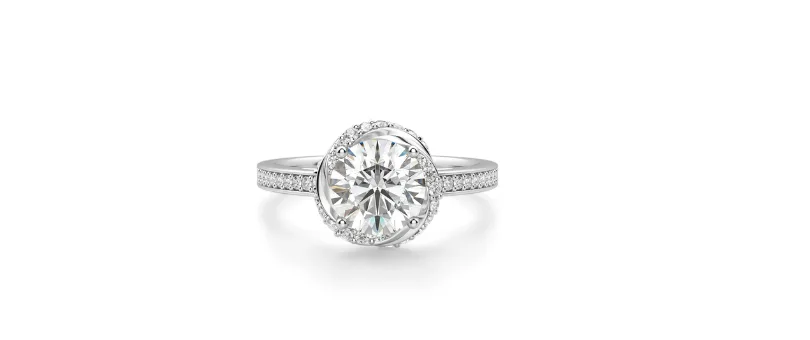
Pavé diamond settings are a beautiful and affordable way to make women’s wedding rings or engagement rings really stand out. Below are some tips to keep in mind when buying a pavé ring:
- Inspect it thoroughly before you purchase. Though pavé rings are fairly sturdy, stones can become loose. Check for stones that might wiggle and ensure they are held securely in place.
- If you plan to encircle the entire ring with a pavé setting, keep in mind resizing later might be tough. Size it correctly beforehand, or don’t pavé around the whole band.
- Inspect to ensure the pavé setting is uniform and even. An uneven French pavé setting means you could risk damage to your ring.
- Use a loupe to ensure there are no cracks found on your accent diamonds. They are tiny, so spotting them with your naked eye will be all but impossible, but a loupe can help you see them.
Shopping for wedding bands or engagement rings for women is both exhilarating and, if we’re being honest, sometimes a little anxiety-producing for some couples. After all, there are so many options out there, and it can be hard to narrow down the choices. Obviously, you don’t want to make the wrong choice because these are rings that are meant to last a lifetime. That’s one of the reasons why working with an experienced jeweler is so important when making such a big decision.
Shop online at Diamond Nexus and choose different diamond alternatives, styles, and designs for a unique look that’s 100% yours!
*Here at Diamond Nexus, we strive to provide valuable information while being clear and honest about our products. The Nexus Diamond™ alternative is a patented lab created diamond simulate that, among all simulants, most closely imitates the look, weight and wear of a diamond, with two exceptions – it is absolutely perfect in every way, and it costs significantly less. Price points and environmental facts expressed in this blog were taken from popular online retailers and may vary. Learn more about the environmental impact of mining by visiting our blog.

